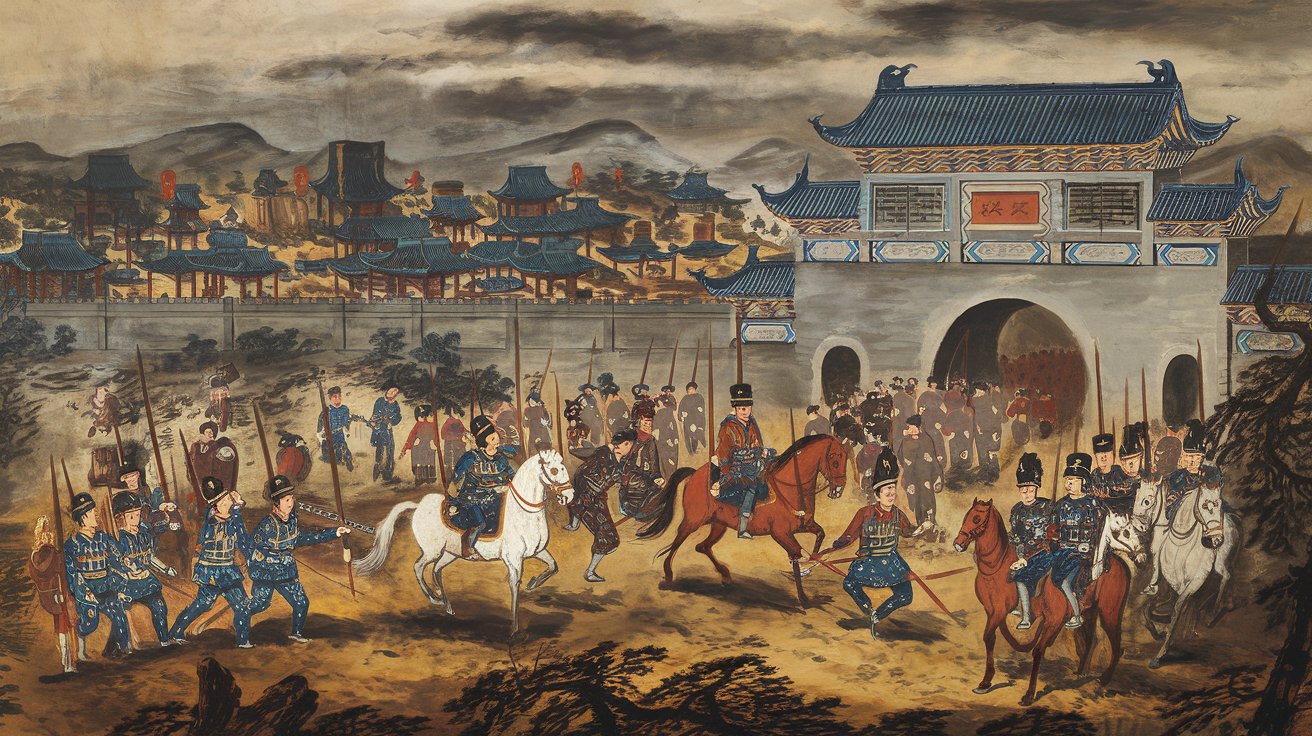
Native American warriors have long captured the imagination with their bravery, skill, and deep connection to their tribes. These warriors were not just fighters; they were protectors, leaders, and symbols of their people's strength. From the Great Plains to the forests of the Northeast, each tribe had its unique traditions and tactics. Did you know that some warriors could communicate over vast distances using smoke signals? Or that their intricate war paint had meanings beyond mere decoration? In this post, we'll explore 35 fascinating facts about these remarkable individuals, shedding light on their lives, battles, and enduring legacy. Get ready to journey through history and discover the true spirit of Native American warriors.
Key Takeaways:
- Native American warriors were brave protectors, using innovative weapons and tactics. Their legacy lives on through modern-day activism and the celebration of women warriors.
- Women played vital roles as warriors in Native American tribes, contributing to their communities' survival and success. Their bravery and strength are increasingly recognized and celebrated.
The Legacy of Native American Warriors
Native American warriors have a rich history filled with bravery, strategy, and cultural significance. Their stories and achievements continue to inspire and educate people today. Here are some fascinating facts about these remarkable individuals.
-
Native American warriors were often seen as protectors of their tribes, responsible for defending their people and territory.
-
Many tribes had specific warrior societies, such as the Cheyenne Dog Soldiers and the Lakota Akicita, which played crucial roles in their communities.
-
The Apache warriors were known for their guerrilla warfare tactics, making them formidable opponents against both rival tribes and European settlers.
-
The Comanche were considered some of the best horsemen in the world, mastering horseback riding and combat from a young age.
-
The Iroquois Confederacy, also known as the Haudenosaunee, had a sophisticated political system and a powerful alliance of warriors from six different tribes.
-
The Seminole warriors of Florida successfully resisted removal by the U.S. government during the Seminole Wars, showcasing their resilience and determination.
Weapons and Tactics
Native American warriors utilized a variety of weapons and tactics that were both innovative and effective. Their skills in combat were honed over generations.
-
Bows and arrows were the primary weapons for many tribes, with warriors becoming highly skilled archers.
-
Tomahawks, a type of axe, were used both as tools and weapons, often featuring intricate designs and decorations.
-
War clubs, made from hardwood or stone, were another common weapon, used for close combat.
-
Some tribes, like the Plains Indians, used lances and spears, especially when fighting on horseback.
-
Shields made from buffalo hide or wood provided protection in battle, often adorned with symbols and designs for spiritual significance.
-
Stealth and ambush tactics were frequently employed, allowing warriors to surprise their enemies and gain the upper hand.
Famous Native American Warriors
Throughout history, several Native American warriors have become legendary for their bravery and leadership. Their stories continue to be told and celebrated.
-
Sitting Bull, a Hunkpapa Lakota leader, is best known for his role in the Battle of Little Bighorn, where his forces defeated General Custer.
-
Geronimo, an Apache leader, led numerous raids and resisted Mexican and American military campaigns for decades.
-
Crazy Horse, a Lakota war leader, played a key role in the Battle of Little Bighorn and was known for his fierce resistance to U.S. government policies.
-
Tecumseh, a Shawnee chief, attempted to unite various tribes to resist American expansion and fought in the War of 1812.
-
Red Cloud, a leader of the Oglala Lakota, successfully waged war against the U.S. Army in what became known as Red Cloud's War.
-
Osceola, a Seminole leader, resisted U.S. efforts to remove his people from Florida, becoming a symbol of resistance.
Cultural Significance
The role of warriors in Native American culture extended beyond the battlefield. They held important positions within their communities and were often seen as spiritual leaders.
-
Many tribes believed that warriors had a special connection to the spiritual world, often participating in rituals and ceremonies.
-
Vision quests were a common practice among young men, seeking guidance and strength from the spirits before becoming warriors.
-
Warriors often wore war paint and feathers, each design and color holding specific meanings and powers.
-
The concept of counting coup, where a warrior would touch an enemy without causing harm, was a way to demonstrate bravery and skill.
-
Storytelling was an essential part of warrior culture, with elders passing down tales of heroism and lessons from past battles.
-
The warrior's role included providing for their families and community, often through hunting and protecting resources.
Modern-Day Warriors
The legacy of Native American warriors continues in modern times, with many individuals serving in the military and advocating for their communities.
-
Native Americans have the highest per capita enlistment rate in the U.S. military compared to other ethnic groups.
-
Code talkers, such as the Navajo during World War II, used their native languages to create unbreakable codes, playing a crucial role in the war effort.
-
Many Native American veterans are active in their communities, participating in ceremonies and advocating for veterans' rights.
-
Organizations like the National Native American Veterans Memorial honor the contributions and sacrifices of Native American warriors.
-
Contemporary Native American warriors often engage in activism, fighting for the rights and sovereignty of their people.
-
The warrior spirit is celebrated in modern powwows and cultural events, keeping traditions alive and honoring past heroes.
Women Warriors
While often overlooked, women also played significant roles as warriors in many Native American tribes. Their contributions were vital to their communities' survival and success.
-
The Crow tribe had female warriors known as "Bíawacheeitchish," who fought alongside men and earned respect for their bravery.
-
Buffalo Calf Road Woman, a Northern Cheyenne warrior, is credited with saving her brother during the Battle of the Rosebud and fighting in the Battle of Little Bighorn.
-
Lozen, an Apache warrior and sister of Chief Victorio, was known for her skills in battle and her ability to sense enemy movements.
-
Women in some tribes, like the Cherokee, held positions of power and could lead warriors into battle.
-
The role of women warriors is increasingly recognized and celebrated in contemporary Native American culture, highlighting their contributions and strength.
The Legacy of Native American Warriors
Native American warriors left an indelible mark on history. Their bravery, strategic prowess, and deep connection to their land and culture continue to inspire. From the fierce resistance of leaders like Crazy Horse and Geronimo to the skilled horsemen of the Comanche, these warriors showcased unmatched resilience. They fought not just for survival but for their way of life, traditions, and families. Understanding their stories helps us appreciate the rich tapestry of Native American heritage. Their legacy lives on through the stories passed down, the lands they defended, and the enduring spirit of their descendants. By learning about these warriors, we honor their contributions and ensure their sacrifices are never forgotten. Their tales remind us of the strength and courage inherent in defending one's home and culture.
Frequently Asked Questions
Was this page helpful?
Our commitment to delivering trustworthy and engaging content is at the heart of what we do. Each fact on our site is contributed by real users like you, bringing a wealth of diverse insights and information. To ensure the highest standards of accuracy and reliability, our dedicated editors meticulously review each submission. This process guarantees that the facts we share are not only fascinating but also credible. Trust in our commitment to quality and authenticity as you explore and learn with us.


